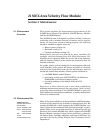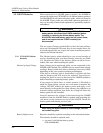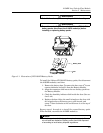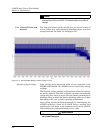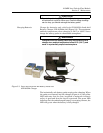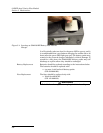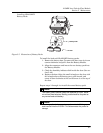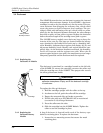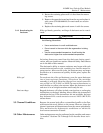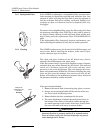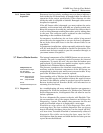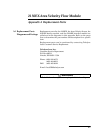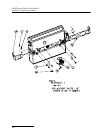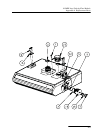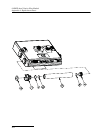
2150EX Area Velocity Flow Module
Section 5 Maintenance
5-9
2. Rotate the retaining plate until it is free from the mount-
ing screws.
3. Remove the spent desiccant bag from the cap and replace it
with a new (P/N 099-0002-33) or reactivated (see section
5.4.3) bag.
4. Replace the retaining plate and secure it with the screws.
5.4.3 Reactivating the
Desiccant
Silica gel beads, granules, and bags of desiccant can be reacti-
vated.
CAUTION
Desiccant may produce irritating fumes when heated. Observe
the following precautions:
• Use a vented oven in a well-ventilated room.
• Do not remain in the room while the regeneration is taking
place.
• Use the recommended temperature. Avoid heating the
desiccant at higher than recommended temperatures.
Irritating fumes can come from the desiccant during reacti-
vation, and you should use caution. Material Safety Data Sheets
are in the back of this manual.
The desiccant’s ability to remove moisture may lessen with each
saturation/reactivation cycle, resulting in a need for more fre-
quent service. After several cycles, the desiccant may no longer
be effective as it saturates too quickly. At this point, replace the
desiccant.
Silica gel To reactivate the silica gel desiccant, pour the spent desiccant
into a heat resistant container. Never heat the cartridge
assembly; it will melt. Heat the silica gel in a vented convection
oven at 100° to 175°C (212° to 350°F) for two to three hours, or
until the blue or yellow color returns. Allow the desiccant to cool
and store it in an airtight container until ready for use.
Desiccant bags Bagged desiccant will often include reactivation or recharging
instructions on the bag’s labeling. Always follow the instructions
printed on the bag. If the instructions are not available, the bags
may be heated in a vented convection oven at 120°C (245°F) for
sixteen hours.
5.5 Channel Conditions Because the sensor body offers a streamlined profile to the flow,
solid materials rarely collect on the sensor. However, clean the
channel upstream and downstream from the sensor periodically.
This maintains the hydrostatic conditions on which the
level-to-area conversion is based.
5.6 Other Maintenance Other maintenance may be performed on the modules and sensor
“as needed.” Sections 5.6.1 through 5.6.3 describe these activ-
ities.



